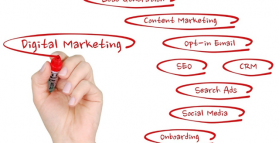
I've been privy to reviewing a number of marketing plans from not-for-profits and start-ups with minimal budgets, through to global giants with multi-million dollar resources.
I find it fascinating that with working to achieve similar goals and objectives for clients as their marketing strategy, PR is still seen as an afterthought, separate to the marketing budget. The promotional plans may include some limited PR tactics like exhibiting at events or being active on social media channels, but it certainly doesn’t show a comprehensive strategy aligned with the rest of the marketing plan.
Marketing strategies often include tactics such as direct marketing, media buying, out-of-home advertising, commercials, trade shows, website, flyers and merchandise. However, rarely is there a comprehensive PR component that looks at areas such as editorial angles and key messaging.
Marketing and PR have long been considered two separate components in business, but there's no denying both achieve an increased brand awareness and drive new customers. It makes sense then, that a PR strategy is considered alongside a marketing plan; not at a later stage.
Along with marketing plan's SWOT analysis, customer profiling, sales forecast, marketing assets, proposed tactics and budget allocations, these five PR considerations should be included:
- Key messages - beyond the price point focus or premium positioning statement, this PR essential ensures key messages are developed so consumers take away something meaningful about the brand.
- Spokespeople - identifying who can represent the brand publicly ensures streamlining and consistency.
- Media relations - this is almost a strategy within a strategy. It requires developing an editorial calendar of topics and suitable timing the company can approach the media with, and a list of key media outlets to help reach the right stakeholders.
- Events - whether it's hosting your own, speaking, or exhibiting at consumer or trade shows, this avenue helps reach target audiences in a ‘one-on-one’ fashion. A list of events, dates, themes, audiences, fees and closing dates should be identified.
- Social media – identifying which platforms you should be on and what content you’ll publish, will direct your communication efforts from day one. There’s no point spending your time and resources creating Instagram content, when the majority of your audience use Twitter and Facebook!
As marketing plans are generally developed by Marketing Managers, it is little surprise that PR isn’t given more attention. They are two different disciplines and of course, you can only develop a strategy based on your own knowledge. If you are tasked with compiling a marketing strategy and PR isn’t your strong point, consider booking a workshop strategy session at Elevate to ensure this vital component is not neglected and all communication avenues are considered so your strategy is as comprehensive as it can be.
Tags: Public Relations

